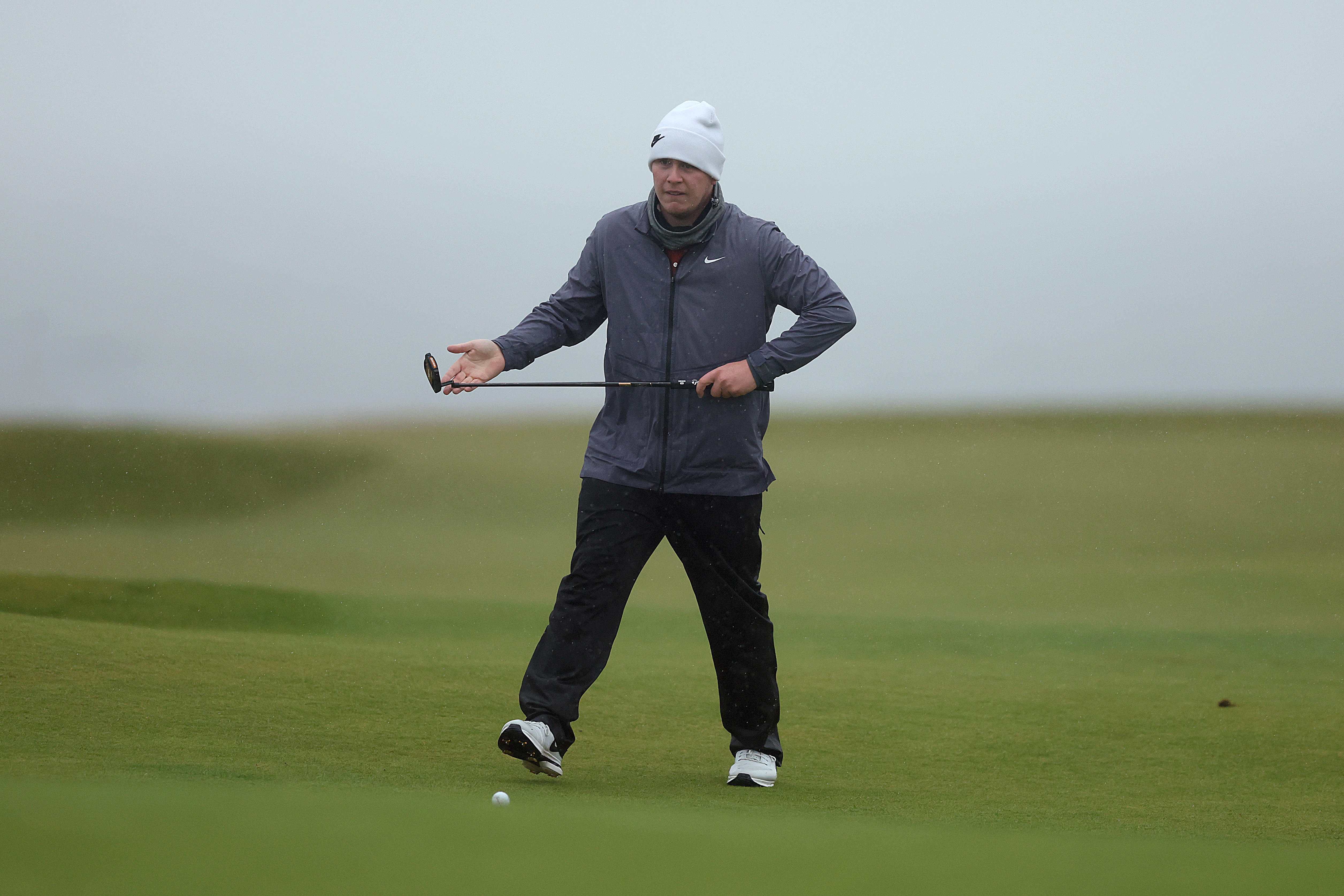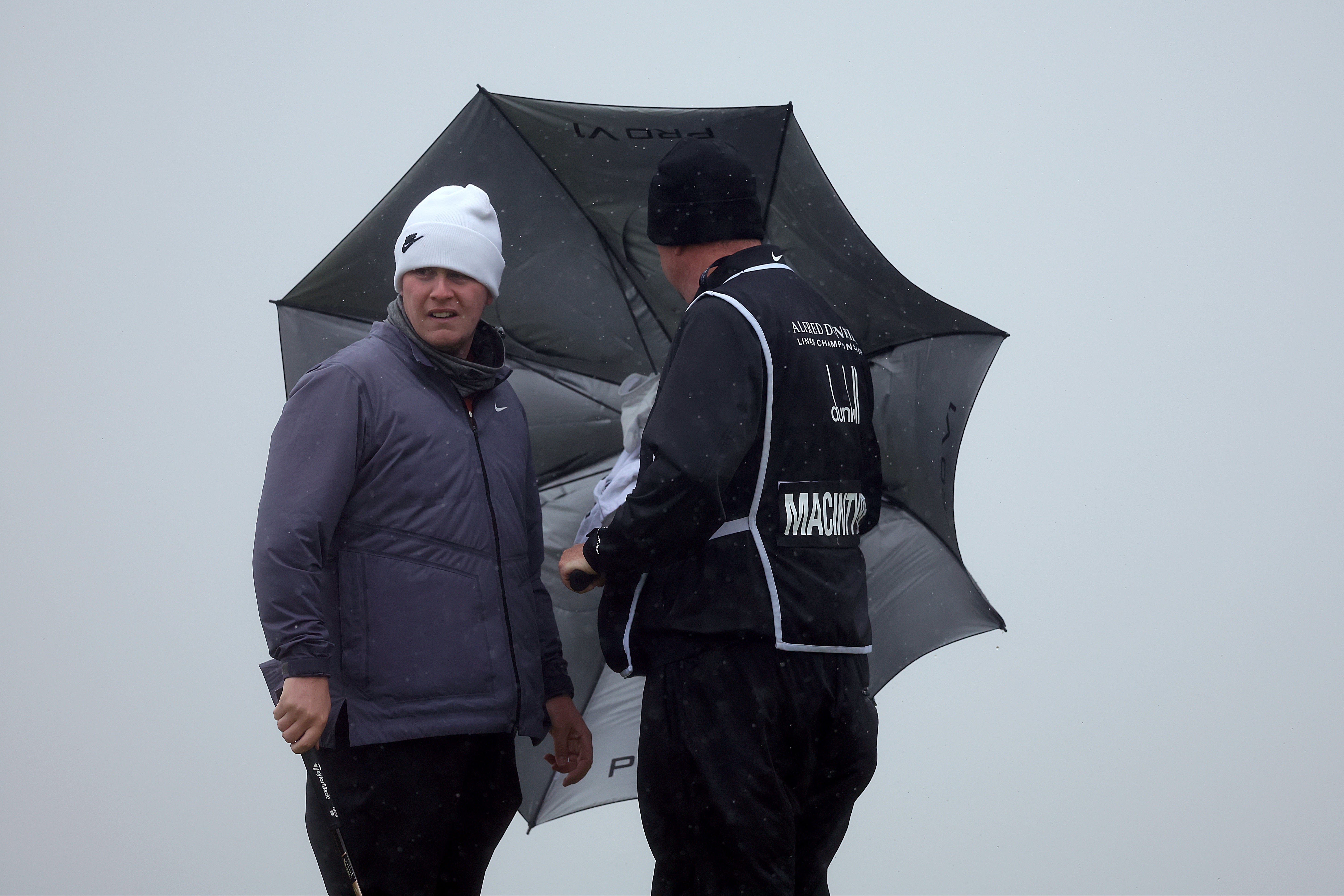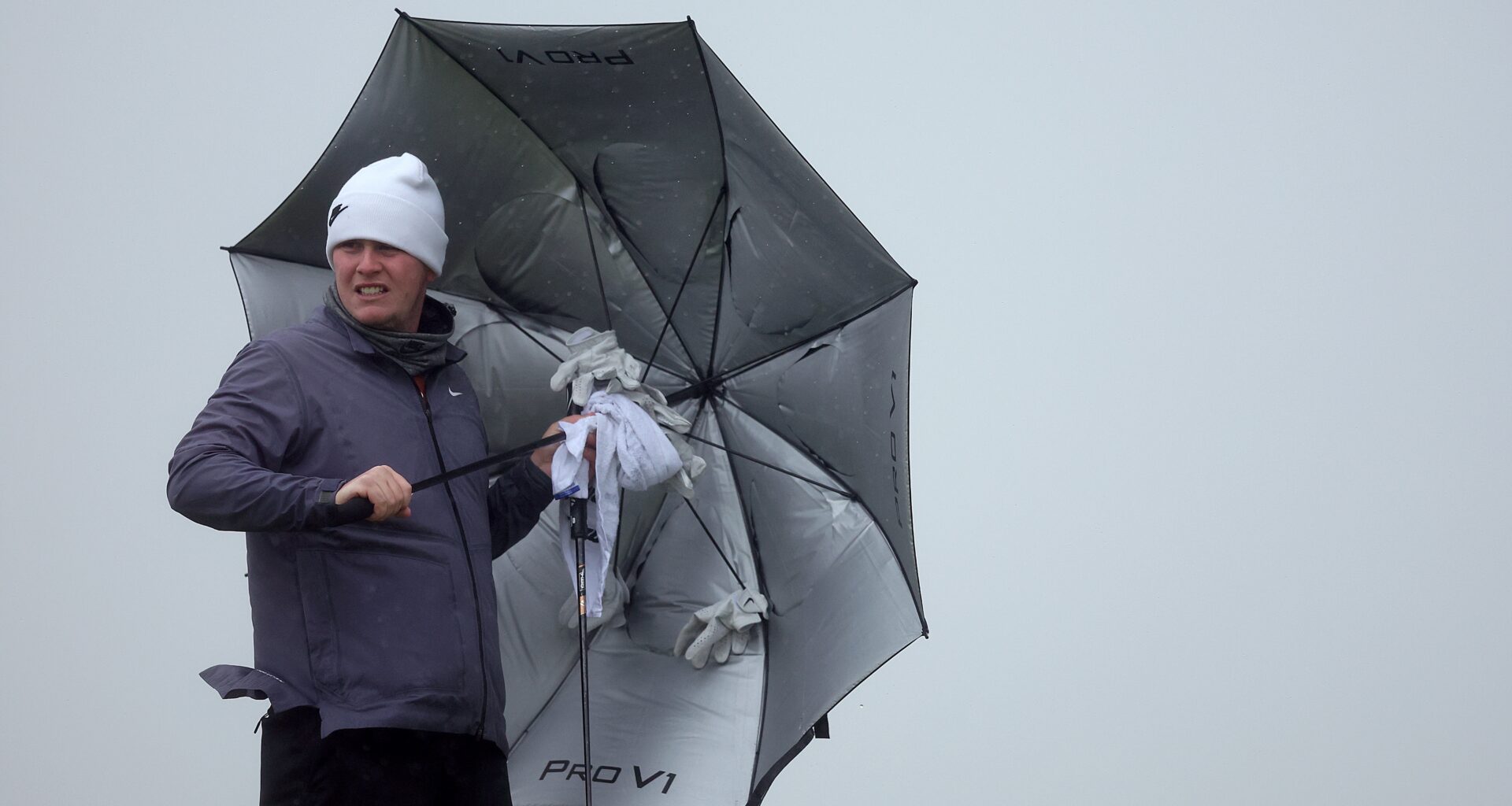Brutal Scottish weather slammed into the 2025 Alfred Dunhill Links Championship, and most players wilted.
Strong winds and heavy rain pounded all three courses. Officials suspended play at 16:14 local time. But Scotland’s own Robert MacIntyre didn’t just survive the conditions at Kingsbarns… he thrived, firing a sensational seven-birdie, one-bogey round of 66 to share the clubhouse lead at 12-under par.
“It was almost a perfect round of golf, especially once the weather came in,” MacIntyre said afterward.
What can amateur golfers learn from MacIntyre’s masterclass in weather management? These six principles will keep your game together when Mother Nature gets hostile.
Accept Discomfort
MacIntyre admitted he “wasn’t comfortable” during his round. He still posted one of the day’s best scores. Stop expecting to feel great in bad weather.
The Breakdown: Mental resistance to discomfort creates tension. That tension destroys your swing rhythm and decision-making. Accept that bad weather means difficult golf, and you free yourself to focus on execution instead of wishing for better conditions.
Action Items:
Before your round, tell yourself: “Today will be uncomfortable, and that’s okay.”
Between shots, take three deep breaths and consciously relax your shoulders.
Focus on one shot at a time instead of dwelling on how many holes remain.
Adjust Your Ball Flight Strategy
MacIntyre noted he was “having to try and fight the wind on certain holes.” Knowing when to work with the wind versus when to battle it separates good wind players from frustrated ones.

The Breakdown: Trying to hit your routine ball flight in strong winds is a recipe for disaster. Lower trajectories reduce wind exposure. Sometimes, accepting wind drift actually helps you find more fairways and greens.
Action Items:
Tee the ball lower and grip down an inch to naturally produce a lower flight.
Take one more club than normal and swing at 80% to keep the ball down.
Aim for the fat part of greens instead of attacking pins. MacIntyre made smart pars when needed.
Commit Fully to Every Shot
Despite the conditions, MacIntyre made “some beautiful shots” because he committed to his decisions. Tentative swings in wind amplify every mistake.
The Breakdown: Wind creates doubt. Doubt creates deceleration through impact. Second-guess your club selection or swing thought mid-swing? You’re almost guaranteed a poor result.
Action Items:
Once you’ve selected a club, don’t change your mind. Commit and swing.
Use a pre-shot routine that includes a practice swing, matching your intended ball flight.
If doubt creeps in, step away, reassess, then commit to your new decision.
Prioritize Solid Contact Over Distance
MacIntyre’s round featured steady play instead of heroics. In bad weather, the quality of contact matters more than how far you hit it.

The Breakdown: Wind and rain make clean contact tougher. Trying to muscle the ball through the wind leads to poor strikes, which get punished even more severely in harsh conditions. Sometimes, poor contact with more club beats a well-struck shorter club in conditions like those faced in Scotland.
Action Items:
Widen your stance by two inches for better stability.
Focus on balance. Finish each swing in control, able to hold your follow-through.
Choose clubs that give you confidence instead of clubs that barely reach your target.
Excel on the Greens
MacIntyre “putted solidly in the wind,” which proved crucial. Everyone struggles with approach shots in the wind, but great putting can salvage your round.

The Breakdown: Putting is the one part of golf least affected by wind. Rain and cold certainly impact green speeds, but when conditions make birdies rare, avoiding three-putts becomes paramount.
Action Items:
In wind, crouch lower and get a good solid base over putts to minimize body movement.
On wet greens, expect putts to roll slower. Add 10-15% more pace.
Focus on lag putting to avoid three-putts instead of trying to make everything.
Get the Right Draw (Or Make Your Own Luck)
Richard Sterne, who shared the lead with MacIntyre, acknowledged: “I got the right draw, I think, for the day, so that helped.” You can’t control tee times. But you can control your preparation.

The Breakdown: Playing in better conditions is lucky. Being ready for anything is smart. MacIntyre played in the worst weather and still matched Sterne’s score because he was prepared.
Action Items:
Check the hourly weather forecast and plan your strategy accordingly.
Arrive early to practice in the actual conditions you’ll face.
Pack extra gloves, towels, and rain gear. Being comfortable helps you play better.
The Bottom Line
MacIntyre’s brilliant 66 in brutal conditions proves that great golf isn’t about perfect weather. It’s about mental toughness, accepting discomfort, adjusting your strategy and executing with commitment. Those things can turn a survival round into something special.
Next time the weather turns nasty, remember this: you don’t need to feel comfortable to play well. You need to be prepared, committed and willing to embrace the challenge.

